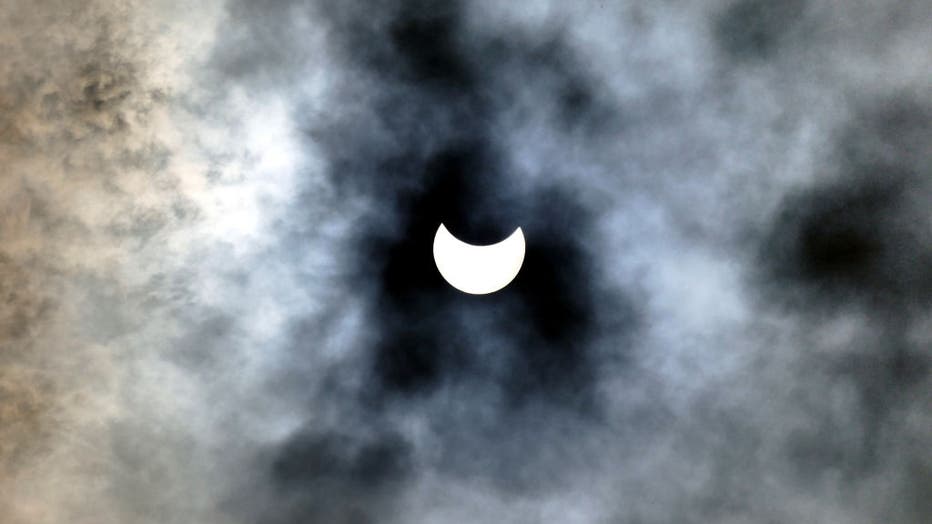Rare hybrid solar eclipse to dazzle skywatchers on Thursday
Total eclipse countdown: The Great North American Solar Eclipse is officially less than 1 year away
In 2023 and 2024, Americans will have the rare opportunity to witness two spectacular celestial events: an annular solar eclipse and a total solar eclipse.
Skywatchers are in for a treat on Thursday as a hybrid solar eclipse will plunge people into darkness on the other side of the world.
There are four types of solar eclipses, with the hybrid solar eclipse being the rarest of them all, as they only occur a few times every century.
Where can you see the hybrid solar eclipse?
If you’re hoping to catch a glimpse of the hybrid solar eclipse on April 20, you’ll be out of luck if you’re in the U.S.
This latest hybrid solar eclipse will only be viewable from the far southern Indian Ocean, Indonesia, parts of western Australia and the South Pacific.
HERE ARE THE ASTRONOMICAL EVENTS TO WATCH OUT FOR IN APRIL
What is a solar eclipse?
Solar eclipses occur when the sun, moon and Earth line up either fully or partially. And depending on how that lineup happens will determine what type of solar eclipse you will experience.
According to NASA, a solar eclipse occurs when the moon passes between the Earth and the sun, casting a shadow that partially or fully blocks the sunlight.
It only happens occasionally, however, as the moon doesn’t orbit the Earth the same way the Earth orbits the sun.
NASA says that the time they are aligned is known as eclipse season, which only happens twice a year.
WATCH OUT FOR THESE ASTRONOMICAL EVENTS IN 2023

The Moon partially eclipses the Sun, Odesa, southern Ukraine. (Photo credit Yulii Zozulia / Ukrinform/Future Publishing via Getty Images)
What are the different types of solar eclipses?
Total solar eclipse
A total solar eclipse occurs when the moon passes between the sun and Earth, blocking out the face of the sun. Anyone within the center of the eclipse will experience darkness. NASA says that weather permitting, people on Earth within the total solar eclipse will see the sun’s corona, which is usually blocked by the bright face of the sun.
The countdown clock is ticking until the next total solar eclipse that will be viewable here in the United States.
The Great North American Solar Eclipse is set to occur on April 8, 2024 - less than a year from now.
The event in 2024 will take place during the afternoon as the eclipse will travel over Mexico, into Texas and 14 other states before exiting through Canada.
Annular solar eclipse
According to NASA, an annular solar eclipse occurs when the moon passes between the sun and Earth but when it’s at or near its furthest point from Earth.
Because the moon is further away from the Earth, it looks smaller than the sun and doesn’t completely cover the surface of the sun. Because of that, NASA says the moon appears as a dark disk on top of a brighter disk and creates a ring around the moon.
Partial solar eclipse
A partial solar eclipse occurs when the moon passes between the earth and the sun but doesn’t completely cover the sun and gives it a crescent shape.
Hybrid solar eclipse
The hybrid solar eclipse is the rarest of all solar eclipses. NASA says that because the earth’s surface is curved, the eclipse can change from an annular eclipse to a total solar eclipse or vice versa as the moon’s shadow moves across the earth.

